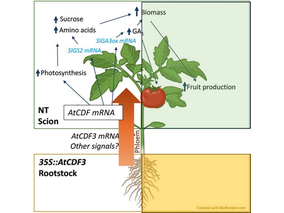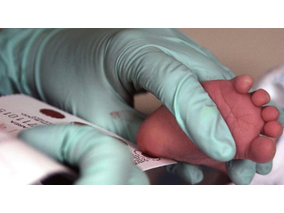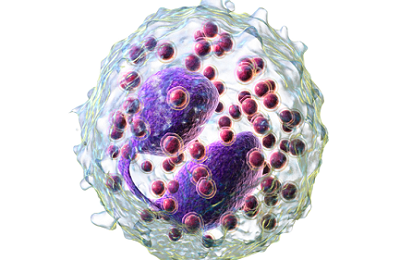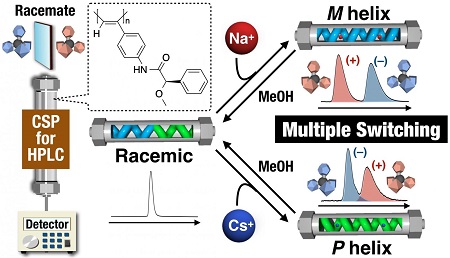The research group at CiQUS Nanobiomol, in the framework of their research line on helical polymers led by professors Félix Freire and Emilio Quiñoá, has just published a new work in the journal JACS (Journal of the American Cheemical Society). An article in which they demonstrate the ability of the helical structure (moreover, its helical sense) to separate racemic mixtures of chiral compounds.
The article, developed in collaboration with Prof. Katushiro Maeda's group, in Japan, also describes that it is possible to change the properties of the stationary phase by changing the direction of roration of the polymer. Additionally, researchers have been able to study how the secondary structure of the polymer (that is, the helix) affects the separation of enantiomers.
To get there, the CiQUS team used a dynamic helical polymer as a stationary phase of high resolution liquid chromatography. The addition of metal salts in the mobile phase allowed to change the direction of rotation of the helix inside the HPLC column and, consequently, to study the role of the helix in the separation of racemates .
The work was mainly developed by the PhD student Asahi Isobe, who did a research stay in the Nanobiomol group funded under the Japanese scholarship program 'TOBITATE'.
References
Outreach: 'New Materials Based on Helical Polymers'

The research team observed changes in head circumf...

AtCDF3 gene induced greater production of sugars a...

Un estudio con datos de los últimos 35 años, ind...

En nuestro post hablamos sobre este interesante tipo de célula del...

La revista ‘Nature Protocols’ selecciona esta técnica como “pro...
Biotechnology portal in Spain
Subscribe to our newsletter and stay up to date with the latest news and deals!
2013 © Biotech-Spain.com - Site Developments SL. All Rights Reserved. Terms of Service | Privacy Policy
Articles
Directory
